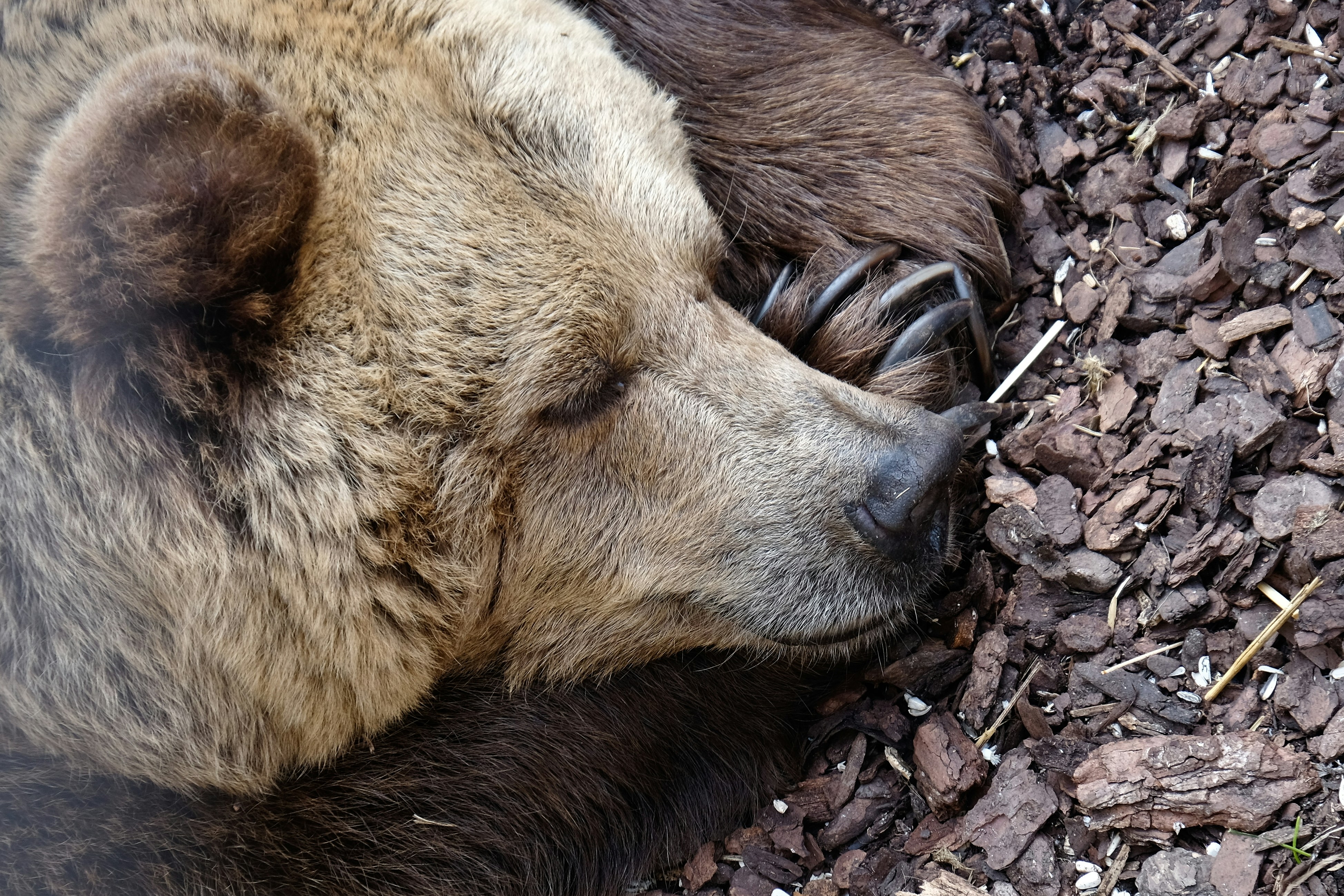In the heart-pounding realm of the untamed wilderness, there exists a tale that will leave you on the edge of your seat: a gripping account of survival against all odds in a bear encounter. Picture yourself amidst the majestic beauty of nature, where imminent danger lurks behind every tree. With a target audience of men aged 30-70, who hold a keen interest in the military, camping, shooting, survival skills, and self-defense, this enthralling story will captivate your imagination and provide valuable insights into handling a bear encounter in the wild. Brace yourself for an adrenaline-fueled adventure that will leave you both entertained and enlightened.
Understanding Bear Behavior
When exploring the wilderness, it’s important to have a good understanding of bear behavior to ensure your safety and the safety of the bears themselves. Bears can be found in various regions around the world, and it’s crucial to differentiate between the different types of bears. Some common types include black bears, grizzly bears, and polar bears. Each species has its own unique characteristics and behaviors, so familiarizing yourself with these differences is essential.
In addition to understanding the different types of bears, it’s also important to be aware of their seasonal behavior patterns. Bears exhibit different behaviors depending on the time of year and their needs. For example, during the spring, bears may be more active as they come out of hibernation and search for food. Understanding these patterns can help you anticipate bear encounters and take appropriate precautions.
Bears are driven by their instincts and motivations, which are mostly centered around their need for food, water, and shelter. It’s crucial to recognize that bears are not inherently aggressive towards humans, but rather, they may display aggression if they feel threatened or if they have learned to associate humans with food. Understanding the motivations behind bear behavior can help you avoid potentially dangerous situations.
Recognizing signs of aggression is essential for your safety when encountering bears. Bears may display aggressive behaviors such as making vocalizations, pawing, charging, or displaying signs of stress. It’s vital to be able to differentiate between defensive aggression and predatory aggression. Defensive aggression is typically a response to feeling threatened, while predatory aggression is more focused on hunting for food. By recognizing signs of aggression, you can take appropriate action to protect yourself and diffuse the situation if necessary.
Preparation and Prevention
To minimize the risk of bear encounters during your outdoor adventures, it’s crucial to take proactive measures. Choosing bear-safe camping locations is one of the first steps toward ensuring your safety. Researching areas that have a low bear population or are known to have effective bear management practices can significantly reduce the likelihood of encounters.
Proper food storage techniques are essential to prevent attracting bears to your campsite. Bears have an exceptional sense of smell and can be attracted to the scent of food from miles away. By storing food in bear-resistant containers or hanging it out of reach, you can greatly reduce the chance of bears being attracted to your campsite.
Using bear repellents and deterrents can also be effective in preventing bear encounters. Bear spray, a form of pepper spray specifically designed to deter bears, can be a valuable tool in your arsenal. Additionally, bear bells can alert bears to your presence and reduce the chances of surprising them. However, it’s important to note that bear bells have limitations, and relying solely on them may not be sufficient.
Avoiding surprise encounters is crucial for both your safety and the well-being of the bears. Making noise while hiking, especially in areas with limited visibility, can alert bears to your presence and give them the opportunity to avoid you. This can be done by talking loudly, clapping your hands, or even wearing bells or bear whistles that make noise as you move. By taking these precautions, you can greatly reduce the chances of unexpected bear encounters.
Knowing Your Bear Facts
When venturing into bear country, it’s essential to gather information about bears’ physical characteristics, behaviors, and communication methods. Identifying bear tracks and scat can provide valuable insights into nearby bear presence. Learning to differentiate between different bear tracks and scat can help you determine if bears frequent the area and take appropriate precautions.
Recognizing bear vocalizations is another crucial skill when it comes to bear safety. Bears can make various sounds, including huffs, woofs, growls, or even moans. Each vocalization serves a different purpose, such as expressing aggression, marking territory, or communicating with other bears. Understanding these vocalizations can help you interpret a bear’s intentions and respond accordingly.
Understanding bear body language is vital for effectively assessing their behavior and mood. Bears communicate through various physical signals, such as ear position, body posture, and facial expressions. For example, a bear that is standing on its hind legs may not necessarily be preparing to attack, but rather trying to gain a better view of its surroundings. By observing and interpreting these body language cues, you can better understand the bear’s state of mind and respond appropriately.
Differentiating between black bears and grizzly bears is crucial as their behaviors and reactions can vary. Black bears are generally more timid and likely to flee when encountering humans, while grizzly bears may exhibit more defensive behaviors. Being able to distinguish between these two types of bears can help inform your approach in a bear encounter.
Survival Gear for Bear Encounters
When heading into bear territory, it’s important to equip yourself with the necessary survival gear to enhance your safety. Bear spray is a highly effective tool for deterring bears and protecting yourself in the event of an encounter. It contains capsaicin, a substance derived from chili peppers, which can temporarily disable a bear and give you a chance to retreat to safety.
Bear bells are commonly used as a preventative measure, but it’s essential to understand their limitations. While bear bells can make noise and potentially alert bears to your presence, they may not always be effective, especially if the bear is preoccupied or the noise is constant. Relying solely on bear bells can create a false sense of security, so it’s crucial to use them in conjunction with other precautions.
Bear-resistant clothing and equipment can add an extra layer of protection in bear encounters. Wearing clothing made of tough, durable materials can minimize the chances of injury if a bear decides to make physical contact. Additionally, carrying bear-resistant food containers and other bear-resistant gear can further reduce the risk of bears being attracted to your belongings.
Alarms and noise-making devices can serve as valuable tools in deterring bears and alerting them to your presence. These devices can startle bears and potentially deter them from approaching further. However, it’s important to note that these devices should be used in conjunction with other safety measures and not solely relied upon.
Reacting to Bear Encounters
Encountering a bear can be a nerve-wracking experience, but knowing how to react appropriately is crucial for your safety. The first step is to remain calm and avoid sudden movements. Bears are naturally curious and may investigate unfamiliar sounds or movements. By staying calm and composed, you can reduce the likelihood of provoking an aggressive response from the bear.
Assessing the bear’s behavior and intent is essential in determining the appropriate course of action. Signs of aggression, such as growling, snorting, or making repeated charges, indicate that the bear feels threatened. In these cases, your primary goal should be to mitigate the threat by making yourself appear non-threatening and slowly backing away.
Making yourself look larger and more intimidating can help deter a bear from approaching you. You can achieve this by raising your arms, spreading your coat, or using other items to make yourself appear larger. By doing so, you may be able to convince the bear that you are not a threat and encourage it to leave.
Backing away slowly without turning your back to the bear is crucial in de-escalating the situation. Avoid making direct eye contact with the bear, as it may perceive this as a threat. Instead, keep a watchful eye on the bear while maintaining a non-threatening posture.
Using bear spray should be considered as a last resort when all other preventative measures have failed. If a bear continues to approach or shows signs of aggression, properly deploying the bear spray can provide a temporary deterrent and allow you to retreat to safety. It’s important to familiarize yourself with the proper technique of using bear spray before heading into bear country.
Dealing with Aggressive Bears
In some cases, you may encounter an aggressive bear that is displaying predatory behavior. It’s important to be able to differentiate between defensive aggression and predatory aggression. Defensive aggression typically occurs when a bear feels threatened, and in these cases, playing dead can be an effective strategy. By lying still, face down, and protecting your vital organs, you may convince the bear that you are not a threat, and it may eventually lose interest and leave.
However, if a bear is displaying predatory behavior and continues to approach, fighting back may be necessary. Use any available objects as weapons and aim for the bear’s sensitive areas, such as its eyes or nose. Remember, this should only be attempted as a last resort when your life is in imminent danger.
If you are in a group, it’s important to prioritize the safety of others. Work together to protect each other, create a barrier between the bear and the group, and deter the bear from approaching further. By acting as a collective unit and demonstrating dominance, you may be able to diffuse the situation and protect everyone in your group.
Post-Encounter Safety Measures
After a bear encounter, it’s crucial to take certain safety measures to ensure your well-being. First, check yourself and others for injuries and seek appropriate medical attention if necessary. Take note of any scratches, bites, or other wounds that may require treatment.
Reporting the encounter to relevant authorities is also important for both your safety and the well-being of future visitors to the area. Providing details about the encounter can help authorities assess the situation and determine if any additional measures need to be taken to prevent further incidents. This information can also contribute to ongoing bear management and conservation efforts.
Take the time to review and analyze the encounter to identify any possible mistakes or areas for improvement. Reflecting on your actions and the bear’s behavior can help inform your future outdoor adventures and enable you to modify your approach to bear safety.
Bear encounters can have a psychological impact, and it’s important to recognize and address any emotional or mental distress that may arise. Coping strategies such as talking to a counselor, sharing your experience with others, or participating in support groups can be helpful in dealing with the aftermath of a bear encounter.
Learning from Real-Life Bear Encounters
Learning from real-life bear encounters can provide valuable insights and help improve your understanding of bear behavior. Exploring thrilling wilderness tales can be both entertaining and educational. These stories often recount the experiences of individuals who have encountered bears in the wild and highlight the importance of preparedness and vigilance.
Case studies of successful bear encounters can offer valuable lessons and shed light on effective strategies for bear safety. Analyzing the actions taken by individuals who have successfully avoided conflicts or diffused potentially dangerous situations can serve as a guide for your own outdoor adventures.
It’s equally important to analyze failures and learn from them. Examining instances where individuals were injured or experienced negative outcomes can help identify mistakes or missteps that can be avoided in the future. By recognizing and understanding these failures, you can improve your own approach to bear safety and reduce the chances of encountering a dangerous situation.
Applying the knowledge gained from real-life bear encounters to future outdoor adventures is crucial for maintaining your safety. By incorporating the lessons learned into your preparations and implementing the strategies and techniques that have proven effective, you can greatly enhance your chances of having a safe and enjoyable experience in bear country.
Bear Safety Tips for Wildlife Enthusiasts
For wildlife enthusiasts who are passionate about exploring and observing nature, it’s important to follow specific bear safety tips. Avoiding attractants and human food is a key aspect of bear safety. Bears have a strong sense of smell and can be attracted to food items even when they are properly stored. By refraining from bringing human food into bear habitats, you can minimize the chance of attracting bears to your location.
Keeping a clean campsite is crucial for maintaining bear safety. Properly dispose of any food waste or trash by using bear-resistant containers or storing it securely. Clean up any spills or food remnants immediately, as even small traces of food can attract bears.
Hiking and traveling in groups is another effective safety measure. Bears are less likely to approach a larger group, as they generally prefer to avoid human interactions. By staying together and making noise while moving, you can alert bears to your presence and give them the opportunity to steer clear.
Respecting bears’ natural habitats is essential for their well-being and your safety. Avoid approaching or feeding bears, as this can habituate them to human presence and increase the likelihood of dangerous encounters. Part of appreciating and enjoying wildlife is observing it from a safe and respectful distance.
Conclusion
Bear safety should be a top priority for anyone venturing into bear country. Understanding bear behavior, preparing and preventing encounters, knowing your bear facts, having the right survival gear, and reacting appropriately are all vital components of bear safety. By following these guidelines and incorporating them into your outdoor adventures, you can greatly reduce the risk of bear encounters and ensure a safer and more enjoyable experience in the wilderness. Remember to always prioritize your safety and the well-being of the bears, and encourage preparedness and vigilance in others who embark on outdoor adventures.










